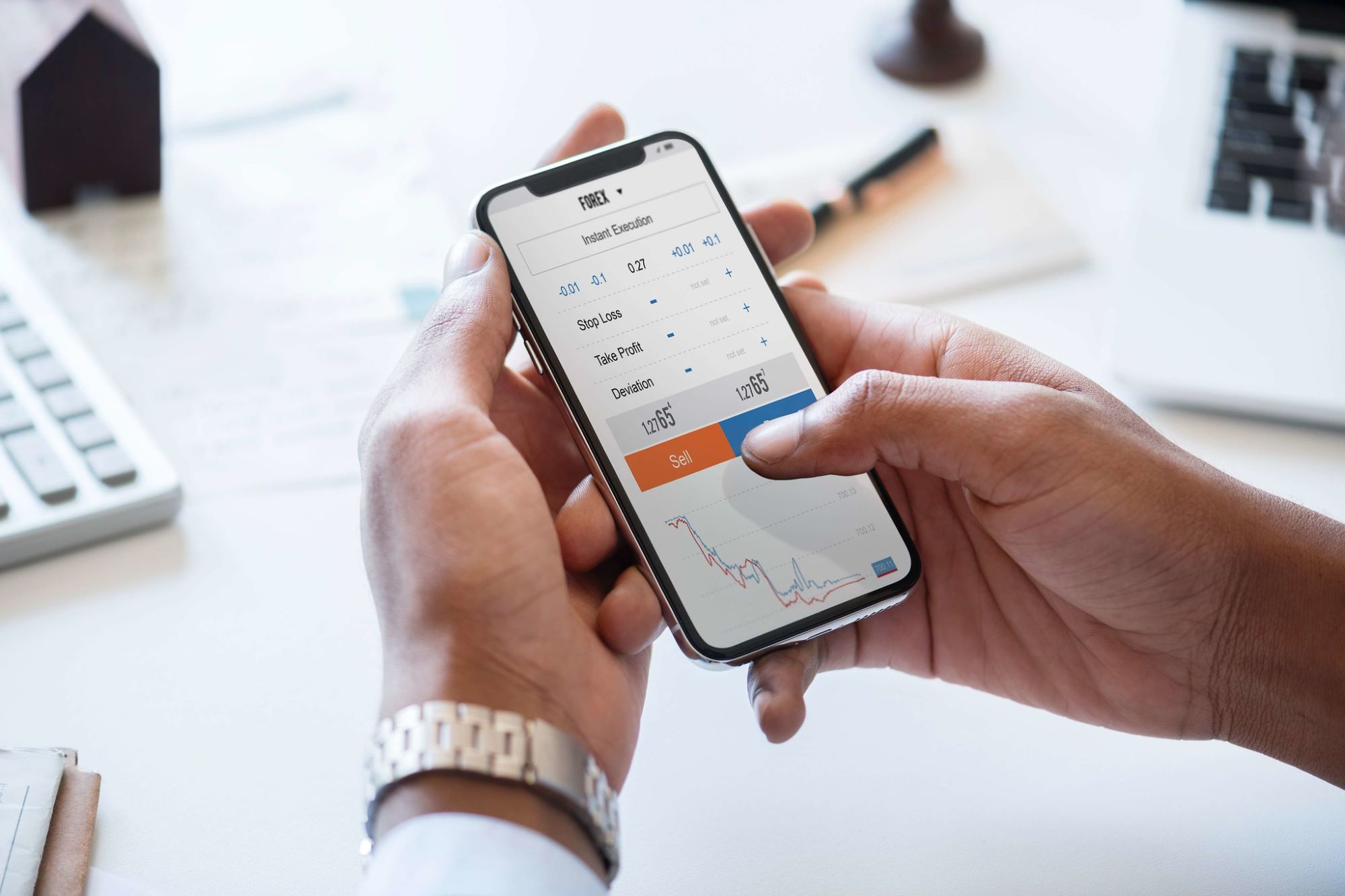In the world of trading, understanding how to balance risk and reward is crucial for long-term success. One of the most effective ways to manage this balance is by using Risk/Reward Ratios. But what exactly is this ratio, and how can you use it to improve your trading strategies? Let’s dive in and explore how to make better trades by mastering the Risk/Reward Ratio.
What is the Risk/Reward Ratio
The Risk/Reward Ratio is a straightforward but effective metric that helps traders gauge the potential profit of a trade compared to its potential loss. This ratio essentially measures how much you are willing to risk in order to achieve a certain level of reward. For instance, if a trader risks $100 on a trade with the expectation of earning $300, their Risk/Reward Ratio is 1:3. This means for every $1 they risk, they anticipate earning $3 in profit. The simplicity of this ratio makes it a valuable tool for traders of all levels, helping them quickly evaluate whether a trade has a favorable risk profile compared to the possible return.
Understanding and applying the Risk/Reward Ratio is crucial because it not only provides a mathematical evaluation of potential trades but also fosters disciplined decision-making. By using this ratio, traders are better equipped to avoid emotional decisions and instead focus on whether the trade offers sufficient reward relative to the amount of risk involved. In essence, this ratio acts as a filter, allowing traders to pursue trades that offer higher potential gains while minimizing their exposure to significant losses. Traders who consistently apply a favorable Risk/Reward Ratio are likely to improve their long-term profitability.
Why is the Risk/Reward Ratio Important in Trading
The Risk/Reward Ratio is essential because it enables traders to make informed decisions about whether a trade is worth pursuing. Without this critical tool, traders might take on excessive risk for minimal potential gains, resulting in a higher likelihood of experiencing substantial losses. By clearly defining both the risk and reward for each trade, traders can assess whether the potential outcome justifies the risk involved. For instance, a 1:2 ratio indicates that a trader is risking $1 to potentially make $2, which would typically be considered a favorable trade.
Moreover, the Risk/Reward Ratio promotes a structured and disciplined trading strategy. It encourages traders to establish specific stop-loss and take-profit levels, ensuring that they know exactly when to exit a losing or winning position. This level of discipline reduces impulsive decisions and helps maintain a consistent trading approach. Overall, traders who use the Risk/Reward Ratio effectively can achieve better consistency and long-term success by avoiding unnecessary risk and focusing on trades with higher reward potential.
Basics of Risk and Reward
What is Risk in Trading
Risk in trading refers to the potential loss you are willing to accept on a given trade. It’s essentially the amount of money you are putting on the line when you open a position. In practical terms, risk is determined by setting a stop-loss, which is a pre-defined price point where you will exit a losing trade to avoid further losses. For instance, if you buy a stock at $100 and set a stop-loss at $95, you are risking $5 per share. The primary goal of managing risk is to ensure that losses are limited, as market movements are unpredictable and losses are a natural part of trading.
Traders use various strategies and technical indicators to set their stop-loss levels, including support and resistance levels, moving averages, or even volatility-based indicators like the ATR (Average True Range). By managing risk effectively, traders ensure that no single trade can wipe out a large portion of their capital. In short, controlling risk is about preserving your trading capital and staying in the game long enough to capitalize on profitable opportunities. Without a proper understanding of risk, traders can quickly find themselves in losing positions with no clear exit strategy.
What is Reward in Trading
Reward in trading is the potential profit you expect to make from a trade. It represents the upside of a trade and is typically calculated based on a price target, which is the level at which you plan to exit a trade with a profit. For example, if you buy a stock at $100 and set your target at $110, your potential reward is $10 per share. The reward should always justify the risk you are taking on the trade. In other words, if you are risking $5, you should aim for at least $10 in profit, resulting in a 1:2 Risk/Reward Ratio.
Setting realistic reward targets is crucial to maximizing profitability while minimizing risk. Traders use various methods to determine reward levels, such as analyzing support and resistance levels, using Fibonacci retracement tools, or evaluating market trends. By carefully planning where to take profits, traders can ensure that they are getting the most out of their successful trades while keeping their overall strategy balanced. A solid understanding of reward targets, combined with proper risk management, can lead to consistent and sustainable trading performance.
Risk Elements
- Stop-Loss: A pre-determined price level where you exit a losing trade to prevent further loss.
- Capital at Risk: The amount of money you’re willing to lose on a single trade.
- Risk Percentage: The portion of your total capital you’re willing to risk (often between 1-2% of total capital).
- Technical Indicators: Tools like moving averages, trendlines, or the Average True Range (ATR) used to determine stop-loss levels.
- Market Volatility: A measure of how much a market’s price moves, influencing your risk levels.
Reward Elements
- Price Target: The level where you plan to take profit from a trade.
- Risk/Reward Ratio: The proportion of risk to potential reward, such as 1:2 or 1:3.
- Support and Resistance: Key levels that indicate where the market may reverse, helping to determine profit targets.
- Market Trends: Identifying market directions to set profitable exit points.
- Profit Potential: The maximum gain you expect to achieve based on your price target.
Using these key elements effectively allows traders to maintain a balanced approach to both risk and reward, ensuring that they capitalize on market opportunities while keeping losses in check.
Why the Risk/Reward Ratio is Key to Success in Trading
The Importance of Risk Management
Effective risk management is the backbone of successful trading. It encompasses strategies that traders implement to protect their capital from excessive losses. By consistently applying a favorable Risk/Reward Ratio, traders can significantly limit their potential losses while ensuring that their winning trades yield sufficient returns. For instance, if a trader adopts a Risk/Reward Ratio of 1:3, this means they are willing to risk $1 for every $3 they hope to gain. Even if the trader faces a series of losing trades, as long as they maintain this ratio, the gains from their winning trades will outweigh the cumulative losses from the losing ones.
Establishing a robust risk management framework involves setting strict guidelines on how much of your total trading capital you are willing to risk on a single trade. Many traders follow the rule of risking no more than 1-2% of their total capital per trade. This approach safeguards against significant drawdowns in capital, allowing traders to stay in the market longer and take advantage of future opportunities. Ultimately, effective risk management helps build a trader’s confidence, enabling them to make informed decisions rather than emotional ones, which can often lead to greater losses.
The Role of Reward in Long-term Trading Success
While risk management is vital, focusing on the reward side of trading is equally crucial for long-term success. An effective trading strategy not only minimizes losses but also maximizes profits. By concentrating on setting realistic and achievable profit targets, traders can ensure that their profitable trades are substantial enough to cover any losses incurred from losing trades. This balance between risk and reward is the essence of successful trading; it transforms a trader’s approach from reactive to proactive.
Moreover, a strong emphasis on reward can lead to a shift in mindset for traders. Instead of focusing solely on minimizing losses, they begin to recognize the potential for gains and the value of patience in allowing trades to develop. This mentality can help traders avoid the common pitfall of exiting winning trades too early, which often results in leaving significant profits on the table. Ultimately, prioritizing the reward not only enhances a trader’s potential profitability but also fosters a more strategic and disciplined trading approach.
| Aspect | Risk Management | Reward Focus |
| Definition | Strategies to minimize losses | Emphasis on maximizing potential gains |
| Objective | Protect capital and ensure longevity in trading | Cover losses and achieve significant profits |
| Mindset | Confidence in decisions, reducing emotional trading | Proactive approach to identify profitable trades |
| Implementation | Setting stop-loss levels, determining risk percentage | Establishing realistic profit targets |
Setting up Your Risk/Reward Ratio in Different Types of Trades
Risk/Reward Ratios for Day Trading
In day trading, where positions are typically opened and closed within the same trading day, traders often opt for lower Risk/Reward Ratios, such as 1:1.5 or 1:2. The reason behind this choice is that day traders aim to capitalize on small price movements that occur throughout the day. They seek to make multiple trades and generate profits quickly rather than holding positions over extended periods. Therefore, a lower Risk/Reward Ratio aligns with the fast-paced nature of day trading, allowing traders to secure profits more frequently while managing their risks effectively.
Day traders must be vigilant and disciplined in their approach to risk management. Since they engage in numerous trades daily, even a few small losses can quickly accumulate and impact their overall capital. By implementing a Risk/Reward Ratio of 1:1.5 or 1:2, they can still generate positive returns over time, as long as they maintain a consistent win rate. This strategy emphasizes the importance of exit strategies, such as setting stop-loss orders to minimize losses and taking profits at predetermined levels to capitalize on favorable movements.
Risk/Reward Ratios for Swing Trading
In contrast, swing trading involves holding positions for several days or even weeks to take advantage of larger price movements. Swing traders typically use higher Risk/Reward Ratios, such as 1:3 or 1:4, because they are targeting more substantial gains and are willing to accept larger potential losses for the opportunity to achieve these larger profits. This approach allows traders to capture significant market swings that may take time to materialize, making it essential to have a well-defined exit strategy that reflects the trader’s overall goals.
When utilizing a higher Risk/Reward Ratio in swing trading, it’s crucial for traders to conduct thorough technical and fundamental analysis. By identifying key levels of support and resistance and using indicators to gauge market momentum, swing traders can set appropriate stop-loss and take-profit levels that align with their risk appetite. This strategy not only optimizes potential returns but also helps traders remain patient, resisting the temptation to exit positions prematurely, which can lead to missed profit opportunities. Ultimately, understanding the differences in Risk/Reward Ratios for various trading styles can significantly impact a trader’s success.





